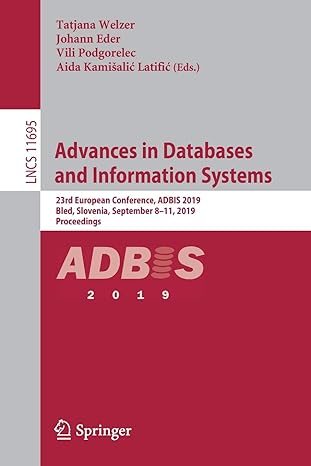Question
In this problem we will work with the formula F defined as follows: x.((y.P(x, y)) Q(x)) You will need to use Quantificational Equivalence Rule 4
In this problem we will work with the formula F defined as follows: x.((y.P(x, y)) Q(x)) You will need to use Quantificational Equivalence Rule 4 that is given on page 128 of Essential Discrete Math.
(A) Put F into Prenex Normal Form. Show your full derivation with a justification for each step.
(B) Put the negation of F, F into Prenex Normal Form. Show your full derivation with a justification for each step.
(C) Let the universe be all people. Give interpretations of the predicates P and Q that make F true. (P should be a binary predicate that relates two people. Q should be a unary predicate that applies to a single person.) Write out English versions of both F and the Prenex Normal Form of F under your model.
(D) Essential Discrete Math tells us on page 129 that: A (xQ(x)) x(A Q(x)) 1 Explain why it is the case that: (xQ(x)) A x(Q(x) A) You should find referring to your answer from part A helpful.
Step by Step Solution
There are 3 Steps involved in it
Step: 1

Get Instant Access to Expert-Tailored Solutions
See step-by-step solutions with expert insights and AI powered tools for academic success
Step: 2

Step: 3

Ace Your Homework with AI
Get the answers you need in no time with our AI-driven, step-by-step assistance
Get Started


